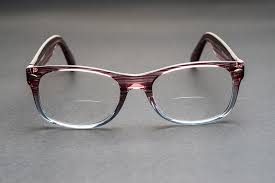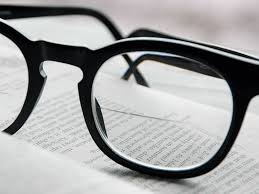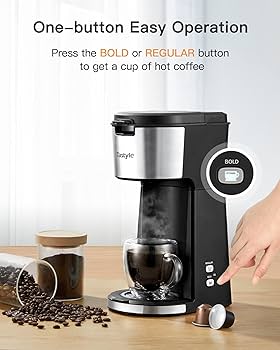Understanding Bifocal Lenses: An In-depth Guide
Introduction
Do you find it challenging to read or use a computer because of blurred near vision, while also struggling with distance vision? If yes, then bifocal lenses might be the solution you need. This comprehensive guide takes you through the fascinating world of bifocal lenses, encompassing the use, functionality, benefits, challenges, and future of bifocal lenses. Also, we've compiled answers to frequently asked questions to help you stay well-informed.
What are Bifocal Lenses?
Bifocal lenses are an intriguing concept in the world of optometry. These ingenious vision aids combine two different optical powers into a single lens, giving clarity to both distant and close-up visuals. Brought to life by the ingenious statesman, Benjamin Franklin, bifocal lenses have grown in reputation and function in the spectacle world. Let's unravel their unique features:
1. Dual Power Zones: Bifocal lenses differentiate themselves from regular glasses by having two distinct zones for vision. The top portion of the lens caters to distance vision, enabling you to watch television or view landscapes with remarkable clarity. Simultaneously, the lower-bottom part serves as the reading lens, perfect for books, mobile phones, or other close-up activities.
2. Franklin's Brainchild: Tired of switching between two glasses for reading and distance vision respectively, Benjamin Franklin conceptualized and invented bifocal lenses. Today, they serve as a powerful tool for millions, easing their daily visual challenges.
3. Lens Division: An important factor to remember is that bifocal lenses bear a visible line separating their top and bottom areas. This line demarcates the transition between the distance and reading vision sections.
Through these unique features, bifocal lenses stand as a revolutionary invention in the optical universe, providing the wearer with a seamless experience for different vision requirements.
Who Needs to Use Bifocal Lenses?
Bifocal lenses serve as a practical solution to vision difficulties for various individuals. These lenses can be a game-changer for:
1. Presbyopia patients: Presbyopia is an age-related vision condition, usually dotting its presence around the age of 40. Here, the eyes lose the ability to focus on up-close items clearly. Bifocal lenses thus come in handy to bridge this gap.
2. People with Myopia (Nearsightedness): With a constant battle to see distant objects, these individuals also benefit from bifocals, especially if they also experience presbyopia.
3. Individuals battling Hypermetropia (Farsightedness): Bifocal lenses help these people see near objects more distinctly, in addition to providing clarity for distant sight.
In essence, bifocal lenses are designed to cater to a wide range of refractive errors, eliminating the need for different glasses to cope with varied vision issues. It's a versatile solution to address multiple vision concerns with a single pair of glasses.
How Do Bifocal Lenses Work?
Bifocal lenses are an innovative solution for vision-related problems, assisting millions worldwide. To understand their effectiveness, it's crucial to unravel the science behind these dual-powered lenses. Their functionality revolves around the presentation of two optical powers within a singular lens:
1.Upper Section of Lenses: The upper portion of the bifocal lens corrects distance vision. This part of the lens is designed to aid in day-to-day tasks relying on distance vision, such as watching television or observing a sports game. When looking straight ahead or upwards, wearers view through this top segment for a clear long-range view.
2.Lower Section of Lenses: The lower portion of the lens tweaked to correct near vision is typically used for tasks such as reading, writing, or viewing a mobile phone screen. As users look downward, their eyes transition to this lower sector of the lens, allowing them to focus finely on near objects.
The principle underlying bifocal lenses is straightforward: facilitating clear vision at varying distances. However, the transition between the two lens sections involves the brain processing two different images simultaneously. As a user vertical gaze shifts, the line dividing the two lens sections allows the wearer to unconsciously flicker between the two prescriptions. This provides a seemingly uninterrupted and coherent visual experience, despite the change in focus and optical power. It's the successful fusion of these elements that enable bifocal lenses to work their magic, improving the quality of life for many experiencing presbyopia and other vision complexities.
What are the Benefits and Challenges with Bifocal Lenses?
Bifocal lenses undoubtedly bring significant advantages to people with specific vision problems, but like any solution, they have their set of challenges too. Here we break down the pros and cons to give you a well-rounded understanding.
Benefits of Bifocal Lenses
1. Versatile Vision Correction: Bifocals provide clear sight at multiple distances, helping those who struggle with both near and far vision.
2. Convenience: These lenses negate the need for multiple pairs of glasses, streamlining the user's eyewear.
3. Uninterrupted Vision: They ensure a smooth transition between reading and distance vision, enabling you to see at different distances without changing glasses.
Challenges with Bifocal Lenses
1. Adjustment Period: Initially, the sudden transition from one lens power to another can cause issues such as dizziness or headaches.
2. Visible Line: Bifocal lenses have a visible line separating the lens sections, which some users find aesthetically unpleasing.
3. Limited Vision Correction: Regular bifocal lenses don't correct intermediate distance vision (like computer work), leading to potential discomfort.
To derive the full benefits from bifocals and lessen the challenges, it's essential to allow an adequate adjustment period and get a proper prescription and fitting from your optician. Remember, the right pair of bifocals can significantly enhance your visual experience.
How to Adjust to Life With Bifocal Lenses?
Becoming accustomed to bifocal lenses often necessitates an adjustment period. The experience differs for each individual - some adapt quickly, while others need extra time to acclimatize. Here are some practical steps to help smoothen the transition:
1. Begin With Short Durations: Start wearing the bifocal lenses for short intervals at home, gradually extending the time as your comfort level increases.
2. Focus Practice: Regularly practice shifting your vision from far to near objects and back. This helps your eye muscles adapt to the different optical powers in the bifocal lens.

3. Eye Movement Over Head Movement: Train your eyes to shift up and down the lens, rather than moving your head. This helps prevent neck strain and improves your vision adjusting capability.
4. Proper Fitting is Crucial: Ensure your bifocal glasses fit well. A slipping pair of glasses can hinder the transition from one optical power to another, reducing the clarity of vision.
By following these strategies, you should be able to adapt to your new bifocal lenses more effectively. Just remember, patience is key during this period, and any persistent vision problems should be reported to your eye care professional.
Where does the Future lead for Bifocal Technology?
The bifocal technology landscape is ever-evolving, paving the way for novel innovations. Here's an overview of what the future holds for bifocal lens technology:
- Introduction of Progressive Lenses: Progressive lenses are the modern-day successors of traditional bifocal lenses. What sets them apart is that they provide a seamless transition between different areas of the lens, eliminating the visible line in bifocal lenses.
- Electronic Bifocal Lenses: This cutting-edge technology is seen as the next big leap in bifocal technology. These lenses automatically adapt their power to the user's focal needs, by using electronics, thereby providing a seamless visual experience.
- Adanced Manufactoring Techniques: Modern manufacturing techniques ensure bifocal lenses offer more precise corrections and are thin and light-weight. These advancements aim to provide more comfort for users.
- Enhanced Cosmetic Appeal: The cosmetic appeal of bifocal lenses has also improved. Invisible bifocal designs, anti-glare coatings, and stylish frames make bifocal glasses more appealing to wear.
These strides in bifocal lens technology signpost a promising future. As digital technology and medical advancements intersect, we can anticipate a future where bifocal lenses provide their users with even greater vision correction and comfort enhancements.
Conclusion
Bifocal lenses cater to a wide range of vision corrections, providing the user with clear, crisp vision at various distances. Despite initial adjustment challenges, these lenses offer immense benefits and value to users, consistently evolving with technological advancements. Know what's right for your vision through professional advice.
Related FAQs about what is a bifocal lens
What's the difference between bifocal lenses and single vision lenses?
Bifocal lenses have two optical powers, offering correction for both near and distance vision simultaneously. Conversely, single-vision lenses only have one optical power and typically correct for either distance or near vision, not both. Thus, bifocals are more versatile, catering to multiple vision issues within a single lens.
What are the different types of bifocal lenses?
There are several types of bifocal lenses: Flat-top/D-segment, Round-segment, and Executive/full-field. The flat-top is the most common type with a D-shaped near segment at the bottom. Round-segments are less common, with a circular near segment, while executive bifocals have a full-width near segment.

Can anyone wear bifocal lenses or do they require a special prescription?
Bifocal lenses usually require a specialized prescription from an optometrist or ophthalmologist. They're typically prescribed to individuals with specific disorders, like presbyopia, myopia, or hypermetropia. It's not advised for individuals without such difficulties to wear bifocal lenses.


